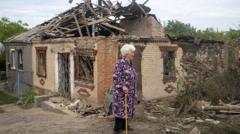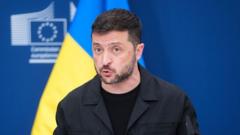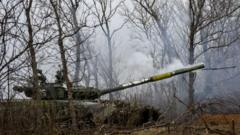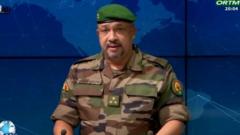**The landscape of combat in Ukraine shifts as fibre optic drones emerge, reshaping tactics and raising stakes on the battlefield.**
**Ukraine's Battleground: The Rise of Deadly Fibre Optic Drones**
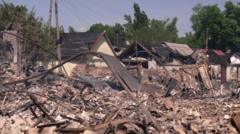
**Ukraine's Battleground: The Rise of Deadly Fibre Optic Drones**
**An exploration of the new drone warfare tactics intensifying the conflict in Ukraine**
The acrid smell of destruction permeates the air in the Ukrainian town of Rodynske, where a deadly 250kg glide bomb recently devastated its main administrative building and obliterated three residential blocks. Our visit follows closely behind the bombing, with smoke still rising from the debris. Located just 15 kilometers north of the contested city of Pokrovsk, Rodynske has become an epicenter of escalating conflict as Russian forces adapt their strategies in an attempt to encircle and cut off supply routes to entrenched Ukrainian soldiers.
We arrive just as a menacing drone buzzes overhead, prompting our team to rush for cover. The eerie whirring has transformed into the leading threat on the frontlines, as the latest Russian drone technology is now reportedly derived from fibre optic systems. These drones, tethered to their operators with a physical cable, circumvent electronic jamming efforts, giving Russian forces a significant advantage in reconnaissance capability.
As we seek shelter, we see the increasing toll the war is taking on local residents. One victim, Svitlana, peers at the remnants of her home, expressing the palpable fear shared by many: “It’s growing worse. We could once hear distant blasts. Now, we are central targets.” Her plight is echoed by soldiers of the 5th Assault Brigade, who lament the relentless bombardment of their positions.
The nature of warfare has drastically changed with the emergence of these fibre optic drones, outpacing Ukraine's capabilities in this novel theater. “They can scout locations with unparalleled precision,” says Moderator, a Ukrainian drone engineer. While these systems are not without their setbacks—being slower and prone to snags—their deployment shifts the dynamics of frontline engagements. Ukrainian soldiers must now live in a state of heightened alert, knowing any movement might reveal their position to the enemy.
These soldiers recount harrowing experiences, some enduring grueling stints of up to 120 days in precarious positions. With diminishing artillery support and ever-increasing drone risks, they face a war that saps their morale and alters traditional military strategies. As one soldier reflects, “We are no longer fighting across a line; it feels more like a chess match, with pieces in constant motion.”
Despite recent territorial gains by Russia, experts believe that complete control over the Donetsk region will not come easily. Ukrainian men and women, many of whom joined the military in the wake of the invasion, represent the heart of the resistance. Among them is Maksym, a father battling through heartache to serve his nation, longing for his young son as the fight for sovereignty continues unabated.
With the war dataset extending into yet another summer, the reality on the ground underscores the urgent need for sustained Western support and resources. Ukraine’s continuing struggle against a larger opponent, equipped with advanced technology, highlights the need for rapid adaptation and resolute spirit as they face an uncertain future.




